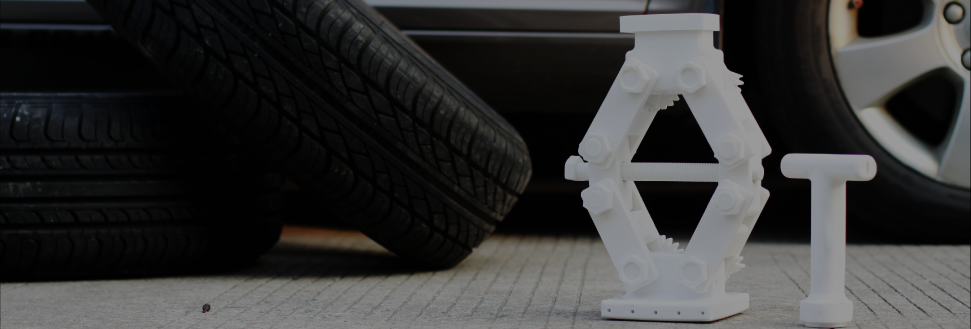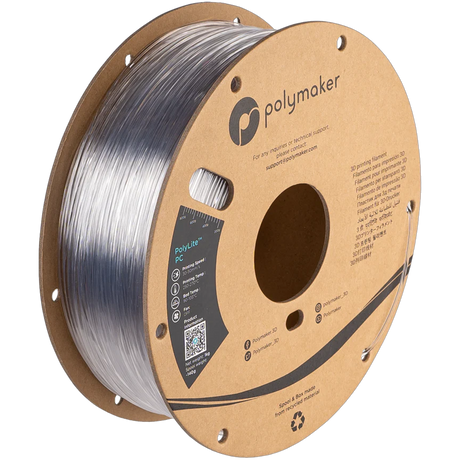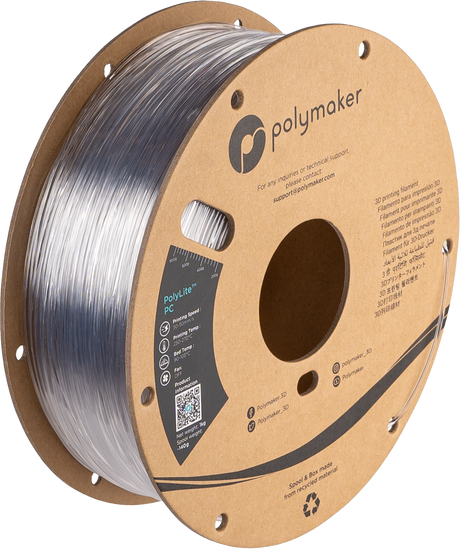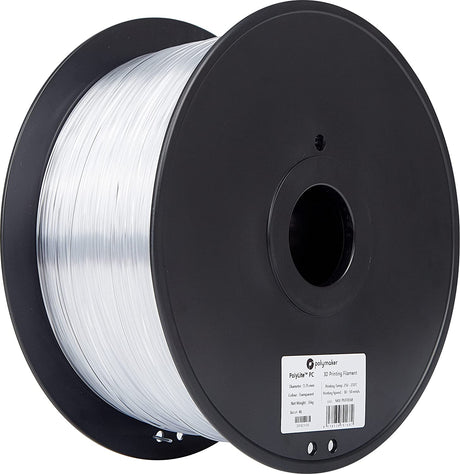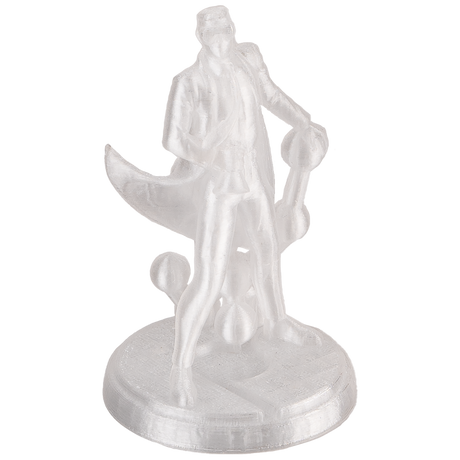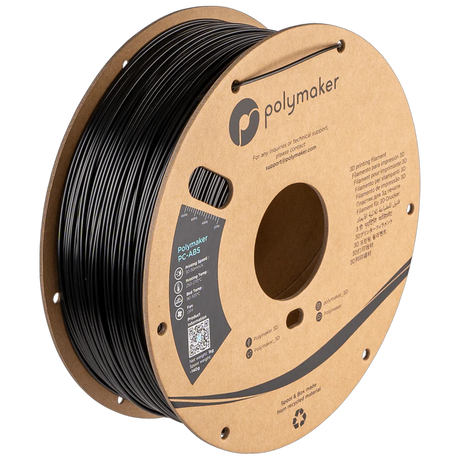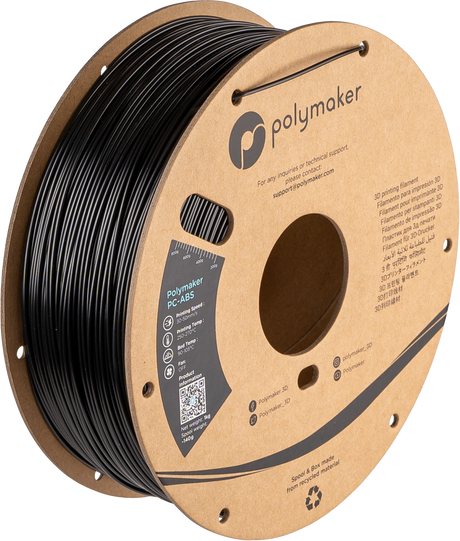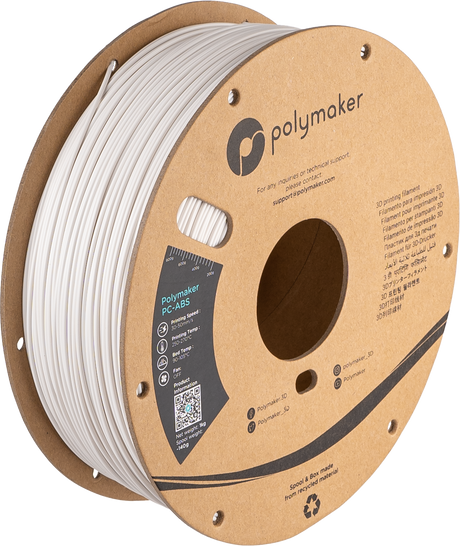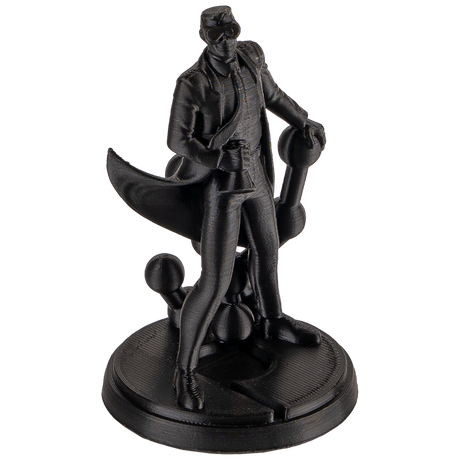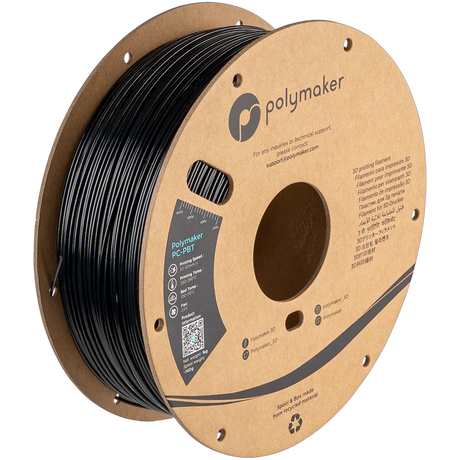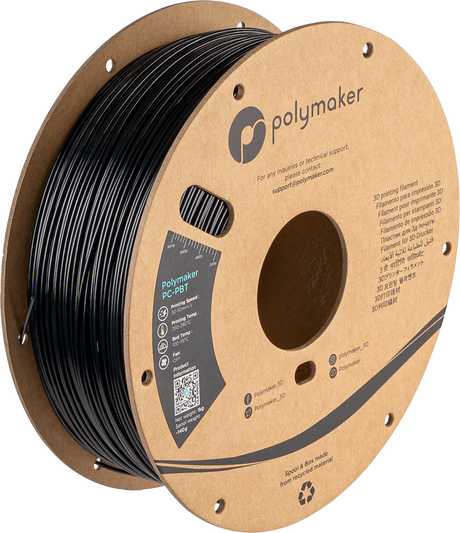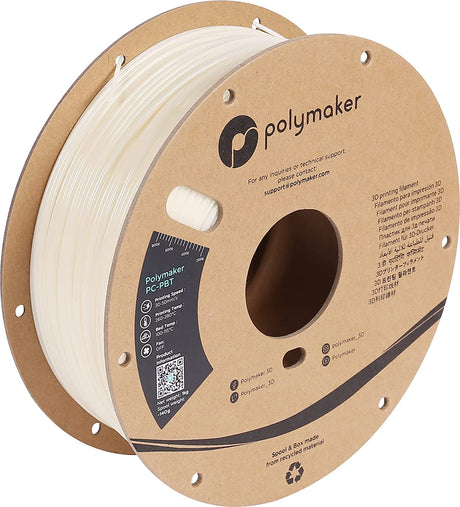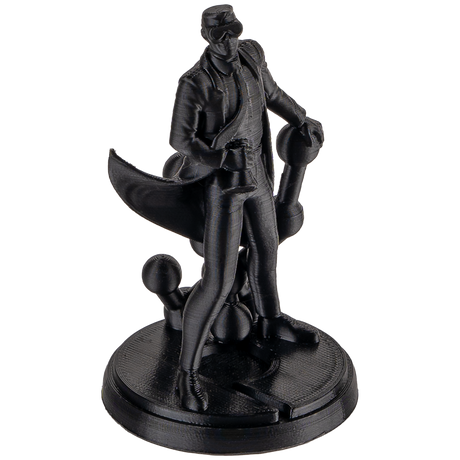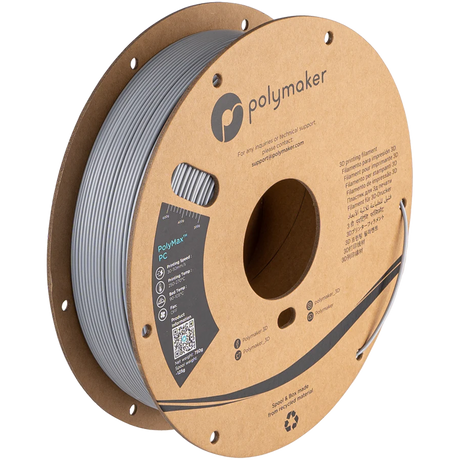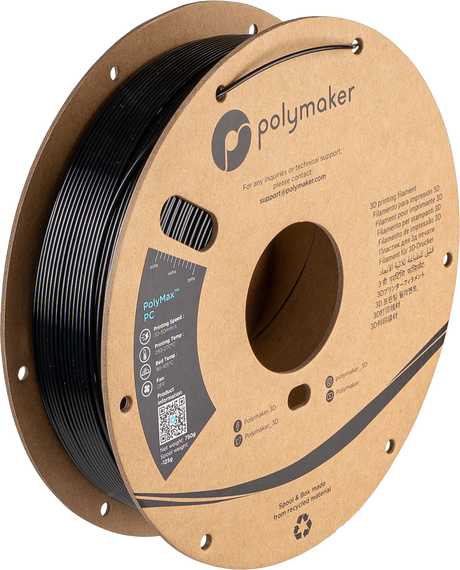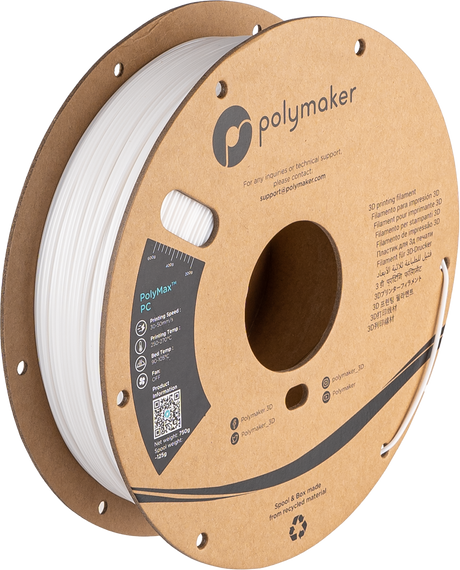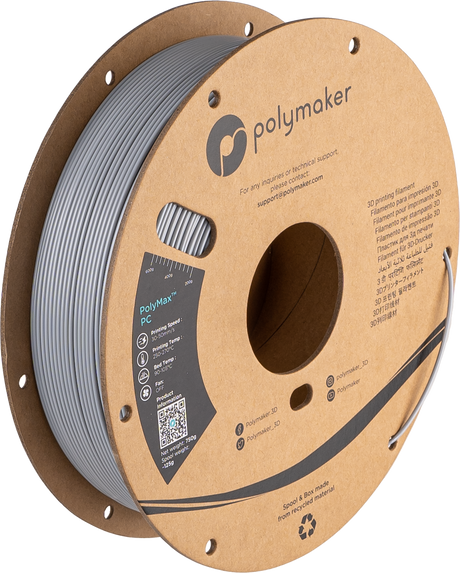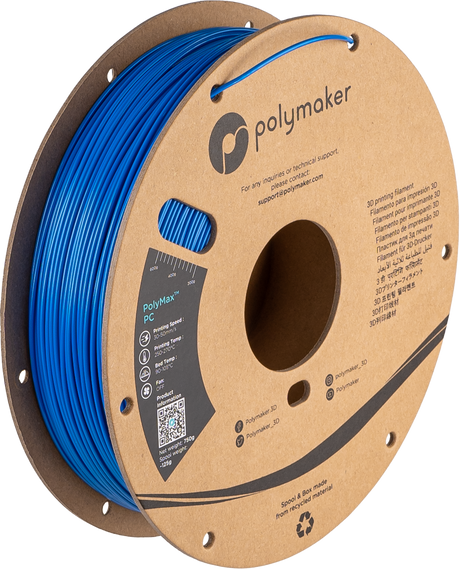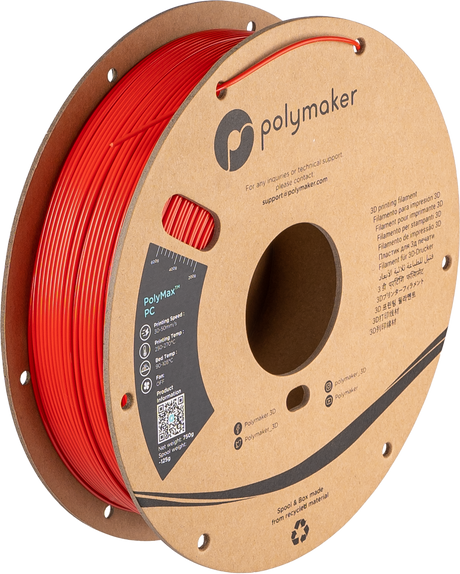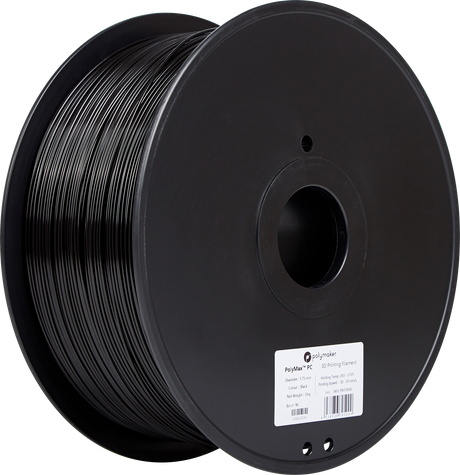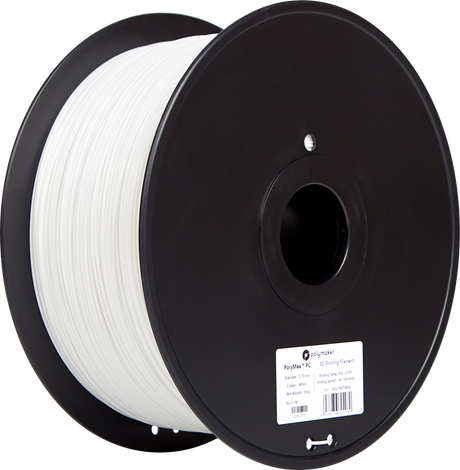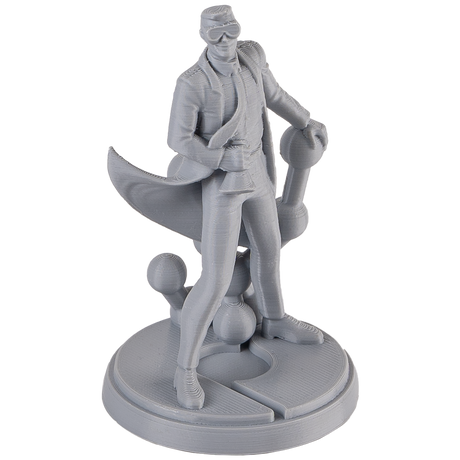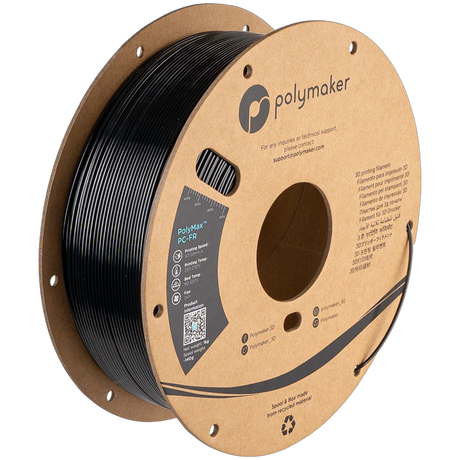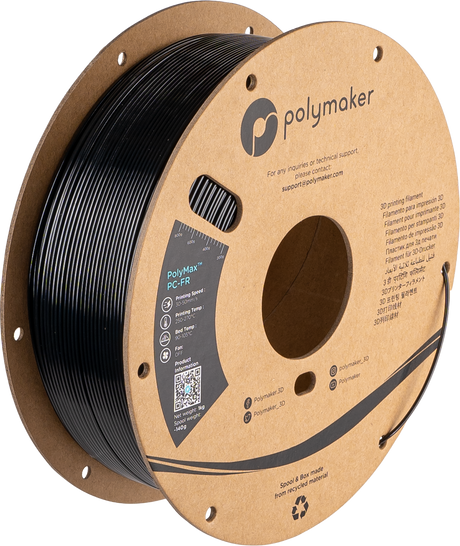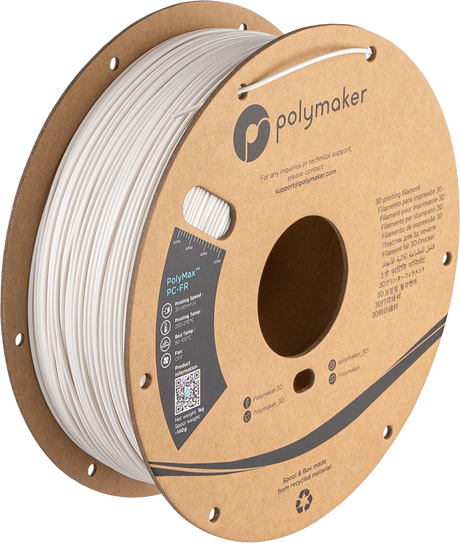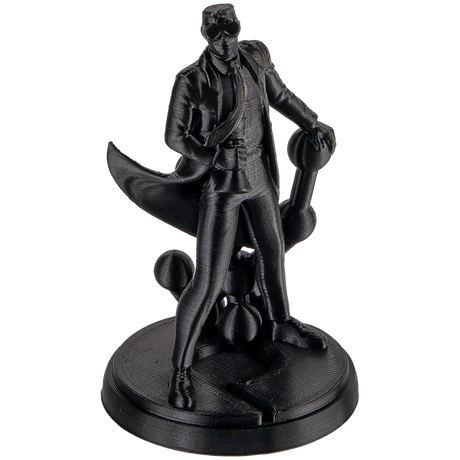Polycarbonate has plenty of engineering applications
Heat and Fire Resistance
Polycarbonate can be a difficult material to print, but if you can print it correctly - then it will have some great heat resistance, strength, and even has the ability to be fire resistant.
Polycarbonate
View allPolycarbonate FAQ
Are there any printing requirements?
Are there any printing requirements?
Yes! There are a few requirements if you want to print in polycarbonate.
First and foremost - you need an enclosed printer that can trap the ambient air temperature. This is a bare minimum.
It is recommended for PolyLite™ PC and PolyMax™ PC to have an actively heated chamber, and it is required to print in PolyMax™ PC-FR, Polymaker PC-ABS and Polymaker PC-PBT.
For PC-FR, PC-ABS, and PC-PBT, you will need an industrial style printer that can keep ambient air temperatures above 90˚C.
All polycarboante materials will also need to be annealed right after printing - by either keeping in the actively heated chamber for 2 hours, or by immediately transfering the print to a 90˚C oven.
What is difference between PolyLite™ PC and PolyMax™ PC?
What is difference between PolyLite™ PC and PolyMax™ PC?
PolyMax™ PC is an engineered PC filament combining excellent strength, toughness, heat resistance and printing quality. It is the ideal choice for a wide range of engineering applications.
PolyLite™ PC does not have great impact resistance and should not be used for general enginering applications.
Can you explain the different types of PC offered?
Can you explain the different types of PC offered?
PolyLite™ PC: PolyLite™ PC is produced using a polycarbonate resin specifically engineered for 3D printing. It delivers good stiffness and heat resistance with light diffusing properties.
PolyMax™ PC: PolyMax™ PC is an engineered PC filament combining excellent strength, toughness, heat resistance and printing quality. It is the ideal choice for a wide range of engineering applications.
PC-FR: PolyMax™ PC-FR, creation from Covestro’s Makrolon® family, could achieve V0 performance in the UL94 flame retardancy test and displays excellent toughness, strength and heat resistance. This filament opens new applications in the automotive, railway and aerospace industries. Requires a heated chamber of 90˚C - 100˚C.
PC-ABS: Polymaker PC-ABS is a PC/ABS polymer blend which offers excellent toughness and heat resistance while displaying good surface finish and good compatibility with metal plating.
Requires a heated chamber of 90˚C - 105˚C
PC-PBT: Polymaker PC-PBT is a PC/PBT polymer blend which offers good heat resistance and toughness at low temperature (-20˚C/-30˚C). Polymaker PC-PBT also features good chemical resistance. Requires a heated chamber of 100˚C - 115˚CPolyMax™ PC
What is annealing and why is it needed?
What is annealing and why is it needed?
Polycarbonate has a lot of internal stress creation when being stretched through a small die (nozzle). You can find out more about this stress creation on our Material Science page.
Essentially, polycarbonate likes to print in a very hot environment in order to cool below its glass transition temperature as slowly as possible. If polycarbonate cools too rapidly - then it is very likely that the layers will "crack" and delaminate.
This means the best environment to print polycarbonate would be in a heated chamber printer where the ambient air is above 90˚C, and then you maintain that heated chamber temperature for 2 hours post printing before allowing to cool slowly to room temperature. This increased air temperature will slow down the release of internal stresses and reduce any chances of delamination.
Since most makers do not have a heated chamber that can get above 60˚C, annealing is required right after your PC print finishes. You will want your oven set to 90˚C and already at its set temperature before the print finishes. Then, the moment your print finishes, you will want to take it and put it directly into that oven.
You may need to transfer the print with the build plate, since removing the print from a very hot build plate can be difficult or not possible.
Leave the print in your oven for at least 2 hours, and then let the oven slowly cool to room temperature before removing the print. This additional time at 90˚C will allow the part to very slowly cool and maintain it's layer adhesion strength.
Will the spools work in an AMS?
Will the spools work in an AMS?
Yes! We have redesigned the edges of our spools so all Polymaker products will now spin great in the AMS.
Where are all the docs? TDS, SDS, etc.?
Where are all the docs? TDS, SDS, etc.?
You can view all material products' TDS, SDS, and Printing Profiles HERE
You can also find mechanical properties HERE
You can then find our other docs:
PC-FR Fire Test V-0 Report
Need further information? We would recommend joining our Discord. Thousands of active community members may have already created the profile you are looking for!


 Canada
Canada Global
Global
